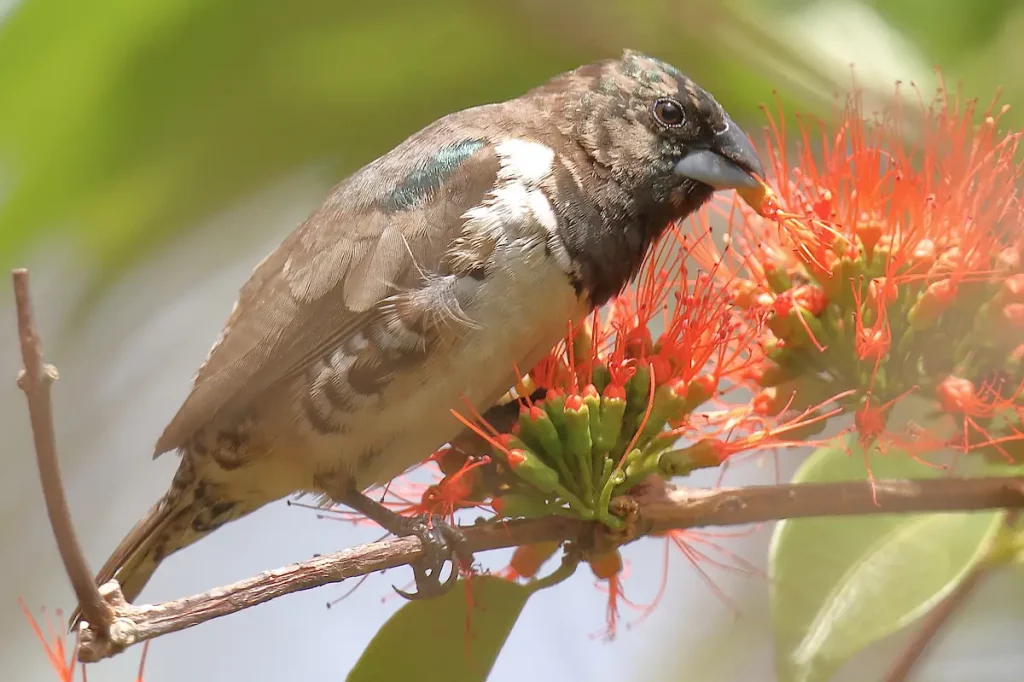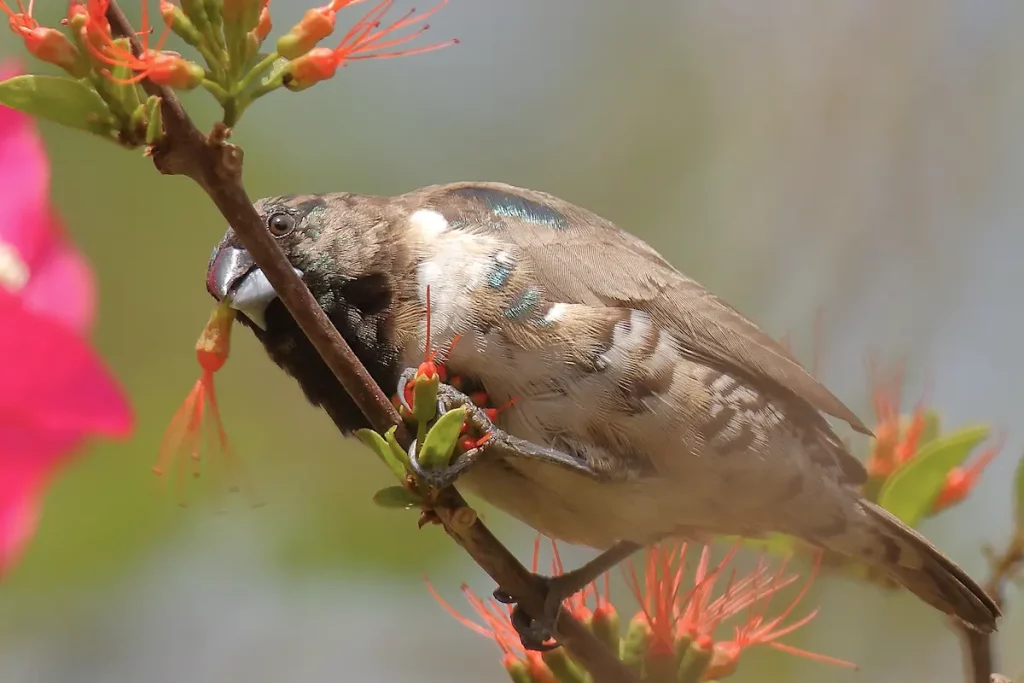Bronze mannikin are plentiful at Footsteps and are often seen around our freshwater pool, usually in groups!
Bird information.
Where can we see a Bronze mannikin?
It is found at Footsteps and all over The Gambia and mainland Africa, the two birds pictured above were taken inside the grounds at Footsteps.
What does a Bronze mannikin look like?
The bronze mannikin is one of the smallest munia species, measuring 9–10 cm in length and weighing 7–12 grams. The adult is a compact bird. It has a short black tail and stubby black and pale grey (not distinctly bluish) mandibles. It is black to brownish-black on the head, chin, throat and centre of the chest. And some purple-green iridescence on the face and sides of the breast. It has greyish-brown upperparts and white underparts with irregular barring on the flanks and rump.
A small green iridescent patch is present on the outer scapular feathers, besides, especially in the western race, the sides of the lower breast. Wing coverts and remiges are bordered in a paler or warmer tone. The sexes are similar. Immature birds are dun brown above with buff heads and underpart plumage. They moult into full adult plumage by age six months. This is when the males also begin to sing and exhibit breeding behaviour. Source Wikipedia
What does it feed on?
They feed primarily on seeds and grasses found on the forest floor. Also, they are partial to the odd termite or two.
Want to know an interesting Factoid?
It is considered by farmers to be a pest as they often feed on recently planted seeds affecting crop volumes.
How does it sound?
Its call is a rreep-rreeep when in flight and a twittering when sat in a tree.


